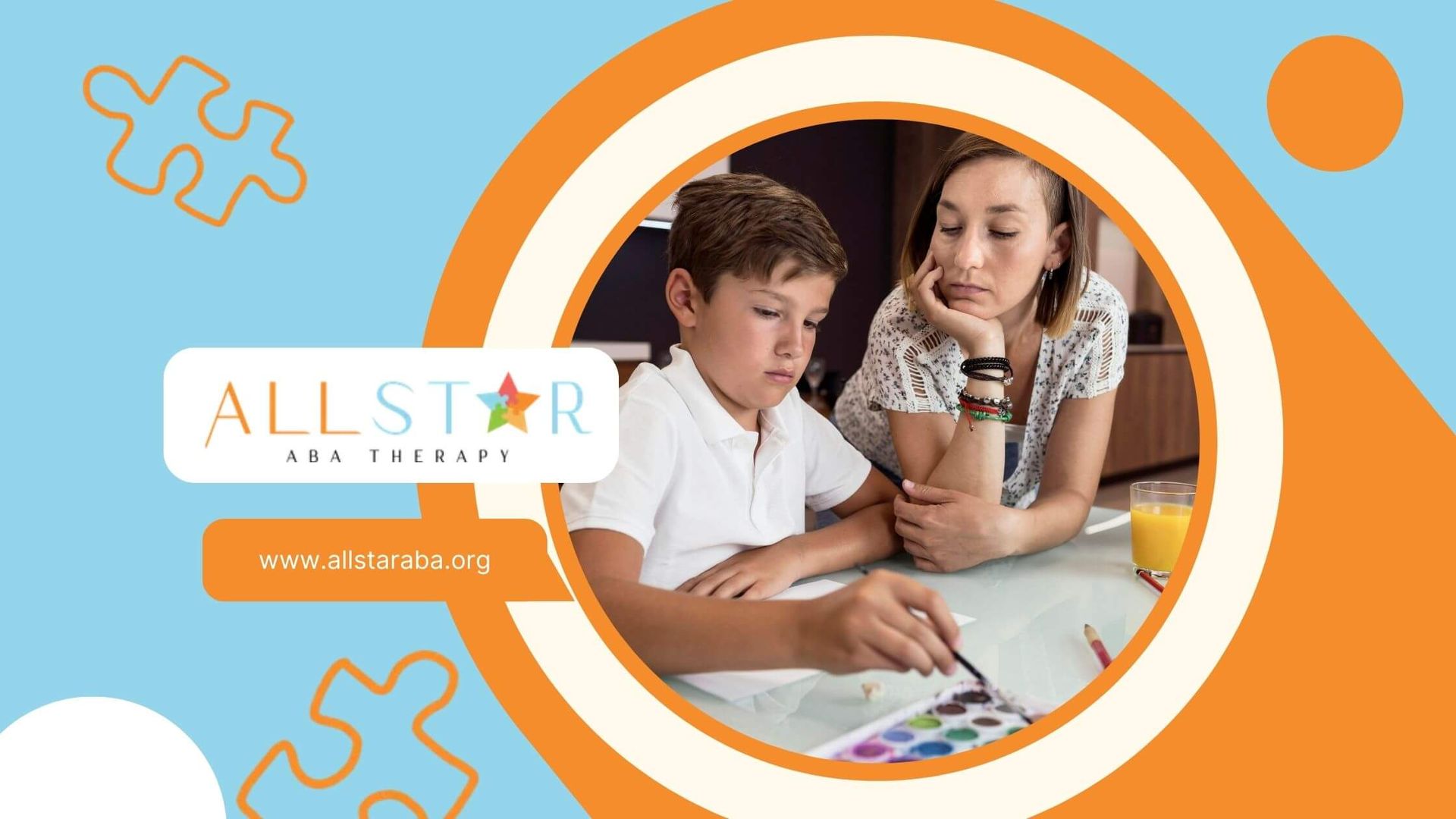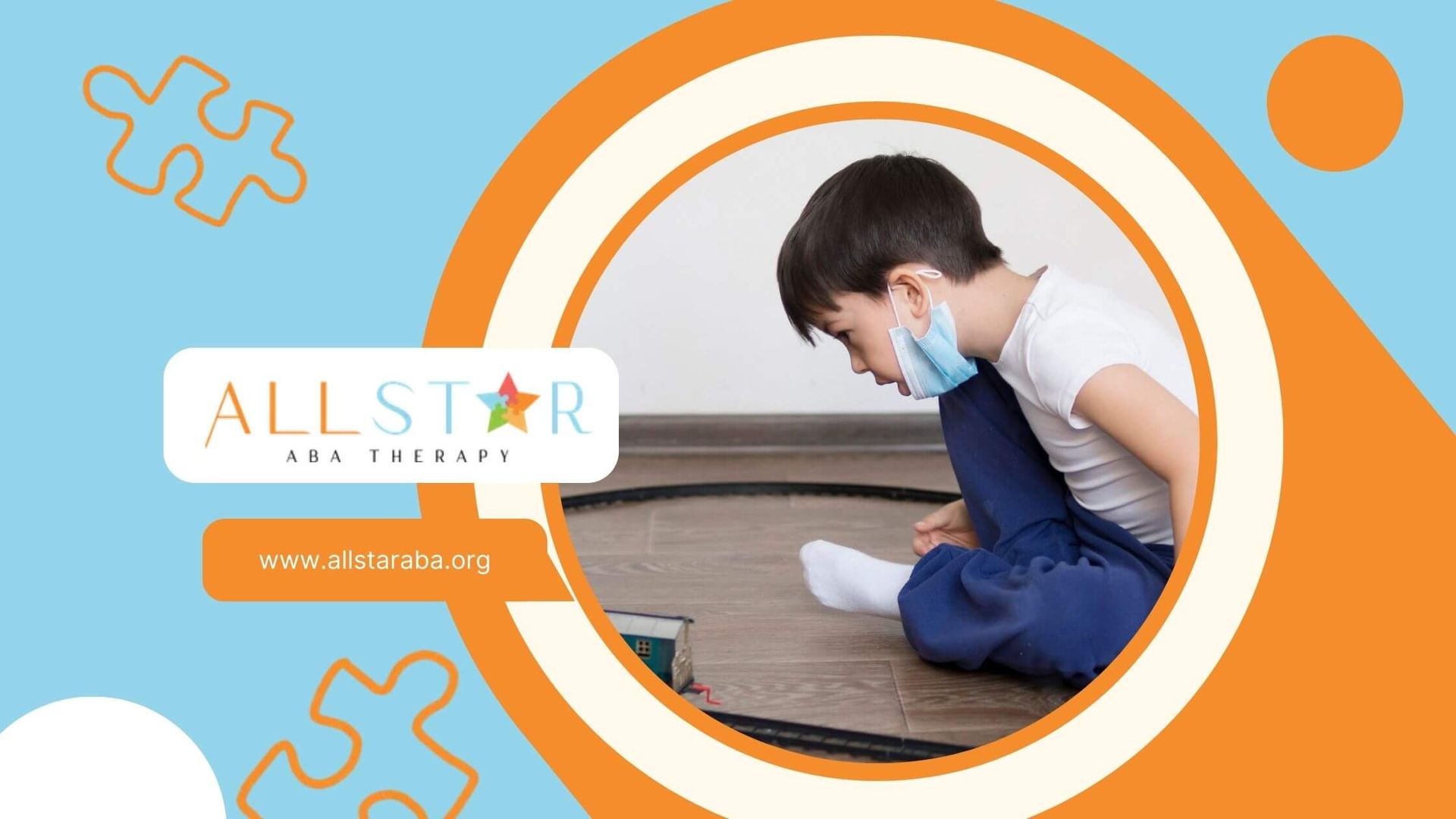New Paragraph
Effective Strategies for Turn-Taking in Autism Therapy
Welcome to our guide for parents. If you have a child on the autism spectrum, you know that developing communication skills can be a unique journey. One of the most important building blocks for social interaction is turn-taking. This simple back-and-forth exchange is the foundation for conversation, play, and friendship. However, it can be challenging for children who struggle to interpret social cues. This guide will provide you with practical strategies and insights to help your child master this vital skill.
The Importance of Turn-Taking Skills in Autism
Turn-taking is more than just waiting for your turn in a game; it's a cornerstone of social communication. For any child's development, learning to take turns fosters a sense of fairness and cooperation. It's how we learn to have a conversation, share with others, and build meaningful relationships.
For a child on the autism spectrum, mastering this skill is especially critical. Strong turn-taking abilities open the door to successful social interactions, from classroom activities to playground fun. It helps improve social skills and makes navigating the social world less frustrating and more rewarding. We will explore the specific ways this skill supports your child.
Definition and Key Concepts of Turn-Taking
At its core, turn-taking is the reciprocal exchange between two or more people. It can be verbal, like a conversation, or non-verbal, like rolling a ball back and forth. This skill requires waiting, listening, and recognizing the right moment to act. It's a fundamental rule of engagement in nearly all social situations.
For children, this concept is often first learned through social play. Simple games are a great way to introduce the idea of "my turn, your turn." You can start with easy activities, like building a tower with blocks, where you each place one block at a time. This helps your child get comfortable with waiting.
Using clear, repetitive language like "My turn" and "Your turn" reinforces the concept. If your child gets upset, it's okay to pause and offer support. The goal is to make social play a positive experience, creating a foundation for more complex communication skills.
The Role of Turn-Taking in Social Development
Turn-taking is a gateway to broader social development. When your child learns to take turns, they are also practicing other vital social skills. They learn patience, cooperation, and how to manage the impulse to act immediately. It’s a key ingredient in forming friendships and participating in group activities.
This skill is also deeply connected to joint attention, which is the shared focus of two individuals on an object. For example, when you and your child take turns adding a piece to a puzzle, you are both focused on the same activity. This shared experience is crucial for building connections.
Furthermore, turn-taking teaches active listening. To know when it's their turn to speak or act, a child must pay attention to what the other person is saying or doing. This enhances their communication skills and helps them become more engaged and responsive in social interactions, which is vital for their overall social development.
Why Turn-Taking Matters for Children with Autism
For children on the autism spectrum, the world of social communication can feel unpredictable. Turn-taking provides a clear, structured framework for interaction. Knowing when to speak, when to listen, and when to act can reduce anxiety in social situations and make participation feel safer and more manageable.
Learning this skill can directly help children with autism who struggle with interpreting subtle social cues. The explicit nature of "my turn, your turn" makes the unwritten rules of conversation visible. This foundation is essential for building more complex social skills and fostering confidence in their ability to interact with others.
Mastering turn-taking also significantly influences speech and language development. Conversations are built on a back-and-forth rhythm. By practicing turn-taking in games and activities, your child is learning the fundamental structure of dialogue. This practice helps them understand conversational flow, leading to more natural and effective social communication.
How Turn-Taking Challenges Present in Autistic Children
Children on the autism spectrum often experience turn-taking differently. What may seem like a simple exchange can be a source of significant frustration. Challenges with impulse control, understanding social cues, and the discomfort of waiting can make these interactions difficult.
These difficulties are common symptoms of autism and can impact a child’s development of social skills and social communication. Recognizing how these challenges appear is the first step toward providing the right support. Below, we'll look at some common signs and how they differ from typical development.
Common Signs and Early Indicators
In early childhood, you might notice some signs that your child needs extra help with turn-taking. These indicators are often related to difficulties with social communication and reading social cues. Early intervention can make a significant difference, so it’s helpful to know what to look for.
Observing your child during play and interaction can reveal these challenges. Do they seem to dominate the conversation or activity? Do they get frustrated when they have to wait? These can be early symptoms of autism related to social interaction.
Some common indicators include:
- Interrupting others frequently during conversations or games.
- Having difficulty waiting for their turn, often showing frustration or anxiety.
- Struggling to share toys or materials during social play.
- Seeming unaware that the other person is waiting for a response.
Recognizing these signs is a key step in supporting your child’s development.
Differences from Typical Turn-Taking Development
While all children learn turn-taking at their own pace, the developmental path for a child with autism spectrum disorder can look quite different. Typically developing children often pick up on the rhythm of interaction intuitively. They observe others and gradually learn to anticipate pauses and read nonverbal cues.
For a child with autism, this process is less automatic. Challenges with joint attention can make it difficult to share focus on an activity, which is a prerequisite for reciprocal play. The Diagnostic and Statistical Manual of Mental Disorders (DSM-5) notes deficits in social-emotional reciprocity as a core characteristic of ASD.
Understanding these differences is key to providing effective support that is tailored to your child's developmental level.
| Feature | Typical Child Development | Autism Spectrum Disorder |
|---|---|---|
| Reading Social Cues | Learns to interpret facial expressions and body language to know when it's their turn. | Often struggles to read nonverbal social cues, leading to interruptions or missed turns. |
| Waiting and Patience | Gradually develops the ability to wait patiently for their turn. | May experience significant discomfort or anxiety while waiting, linked to impulse control challenges. |
| Joint Attention | Naturally engages in shared focus on toys or activities with a partner. | Can have difficulty establishing and maintaining joint attention, impacting back-and-forth play. |
| Conversational Flow | Develops a natural back-and-forth rhythm in conversation. | May dominate conversations with preferred topics or struggle to respond to others' contributions. |
Impact on Communication and Relationships
Difficulties with turn-taking can have a ripple effect on a child's life, impacting their communication skills and ability to form relationships. When a child struggles to participate in the give-and-take of social interaction, conversations can feel one-sided, and play can become frustrating for everyone involved.
These challenges can make relationship building difficult. Friendships are often built on shared experiences and reciprocal communication. If a child consistently interrupts or doesn't respond in social situations, peers may find it hard to connect with them, which can lead to social isolation.
This also affects speech and language development. The natural flow of conversation provides a model for language. Without successful turn-taking, a child misses out on valuable opportunities to practice listening, processing information, and formulating a response. This can slow progress in developing more nuanced communication skills.
Understanding the Foundations of Turn-Taking
To effectively teach turn-taking, it’s helpful to understand the foundational skills it’s built upon. Turn-taking isn’t a single skill but a combination of several abilities working together. These include joint attention, the ability to process social cues, and active listening.
When these underlying skills are challenging for a child, turn-taking becomes difficult. By focusing on strengthening these building blocks, you can provide your child with the tools they need to succeed in social interactions. Let's explore how these components connect to turn-taking and what factors influence a child's ability to learn.
Joint Attention and Its Connection to Turn-Taking
Joint attention is the ability to share a common focus with another person on an object or event. Think of pointing to an airplane in the sky and your child looking at it too—that’s joint attention. It’s one of the earliest forms of social communication and a critical prerequisite for turn-taking.
In any turn-taking activity, from playing a game to having a conversation, participants need to be focused on the same thing. For children with autism spectrum disorder, establishing and maintaining joint attention can be a challenge. This can make reciprocal social interaction feel disjointed.
By practicing activities that promote joint attention, you can directly support your child's turn-taking abilities. Simple games like rolling a ball back and forth or reading a book together encourage this shared focus. As joint attention improves, it creates a smoother pathway for speech and language development, as the child is more tuned in to the social interaction.
Processing Social Cues
Social cues are the verbal and nonverbal signals we use to communicate. These include tone of voice, facial expressions, and body language. In a typical conversation, we rely on these cues to know when someone is finished speaking and when it's our turn to respond.
Children with autism often have difficulty processing these subtle signals. They might not notice the pause in a conversation that invites a response or misinterpret a facial expression. This can lead to them interrupting others or not responding at all in social situations.
Challenges in processing nonverbal communication are a common way turn-taking difficulties present. Some examples of missed cues include:
- Not recognizing a look of anticipation from a play partner.
- Failing to notice when someone's body language indicates they are about to speak.
- Misinterpreting a tone of voice that signals the end of a thought.
- Overlooking hand gestures that guide the flow of an activity.
Improving the ability to recognize these cues is key to enhancing communication skills.
Factors That Affect Turn-Taking Abilities
A child's ability to learn turn-taking is influenced by several factors, and recognizing these individual differences is key. Your child’s developmental level plays a huge role. An activity that works for an older child might be too complex for a younger one. Tailoring the approach to their current abilities is essential.
Your child’s interests are another powerful factor. Children are more motivated to practice new skills when engaged in activities they genuinely enjoy. Incorporating their favorite toys, characters, or topics can transform a learning session into fun playtime. This is an effective parent-mediated intervention because you know your child’s interests best.
Other factors, like motor skills and sensory needs, also matter. A child with fine motor challenges might struggle with certain board games, while a child with sensory sensitivities might be overwhelmed by a noisy group activity. Choosing activities like sensory play or simple physical games can provide a comfortable context for learning.
Parent-Mediated Strategies for Teaching Turn-Taking
As a parent, you are your child's first and most important teacher. You can create a supportive environment at home to help children learn and practice turn-taking. Parent-mediated early intervention is one of the most effective strategies for building social skills because it integrates learning into your child's daily life.
The key is to use simple, consistent techniques that feel natural and fun. By modeling behavior, using clear cues, and building practice into everyday routines, you can make a significant impact. Let's look at some specific strategies you can start using today.
Modeling and Demonstrating Social Skills
Modeling is one of the most powerful tools in your toolkit. Children, especially those with autism, learn by observing. When you demonstrate appropriate turn-taking behavior, you provide a clear, concrete example for them to follow. This is a highly effective parent-mediated intervention.
During social play, you can model turn-taking by using simple phrases and actions. For example, when building with blocks, say "My turn to put a block on," and then, "Now it's your turn." This explicit modeling helps demystify the rules of social interaction and supports your child's development.
Here are some ways you can model and demonstrate social skills:
- During family meals, use a "talking stick" to show whose turn it is to share about their day.
- When playing a game, clearly announce whose turn it is.
- In conversations, consciously pause to give your child time to respond.
- Use video modeling, where your child watches short clips of others taking turns correctly.
This consistent demonstration of communication skills helps make the abstract concept of turn-taking tangible.
Using Clear Communication and Cues
Clear communication is essential when teaching turn-taking. Vague instructions can be confusing, but simple and direct language provides the structure your child needs. Instead of saying, "Let's share," try being more explicit with, "First my turn, then your turn."
In addition to verbal instructions, visual social cues can be incredibly helpful. These nonverbal communication aids can reinforce the turn-taking sequence and reduce your child's cognitive load. This strategy makes it easier for them to focus on the social interaction itself.
Here are some examples of clear communication and cues to use during play activities:
- Use hand gestures, like holding up a hand to signal "stop" or "wait."
- Create simple cue cards that say "My Turn" and "Your Turn" and flip them during a game.
- Use a timer to visually represent how long a child needs to wait.
- Point to the person whose turn it is to speak or act.
These strategies make the rules of social interaction visible and predictable.
Building Turn-Taking into Everyday Routines
Practice makes perfect, and the best way to practice is by weaving turn-taking into your daily routines. This approach makes learning feel less like a lesson and more like a natural part of the day. Look for small, simple opportunities to introduce a back-and-forth exchange.
For example, when getting dressed, you can take turns putting on items of clothing. "My turn to put on a sock, your turn to put on a sock." During snack time, you can take turns picking a cracker from a plate. These small moments of interactive play build up over time.
By following your child’s lead and incorporating turn-taking into activities they already enjoy, you create positive associations with the skill. The goal is to make it a fun and regular part of your social skills practice, not a chore. Frequent, low-pressure practice in familiar settings is a fantastic strategy for building confidence.
Games and Activities for Practicing Turn-Taking
Play is a child's natural language, and it's one of the best ways to teach new skills. Simple games and fun activities can provide a relaxed and motivating context for practicing turn-taking. The right games can improve play skills and make social play more enjoyable.
From one-on-one exercises to group activities, there are countless ways to practice. You can use anything from board games to sensory toys. The key is to choose activities that are engaging and appropriate for your child's development. Let's explore some specific ideas for play-based learning.
Simple Play-Based Exercises
You don't need complicated games to teach turn-taking. The simplest activities are often the most effective, especially when you're just starting. These exercises focus on establishing a clear, predictable back-and-forth rhythm.
Choose activities with a definite start and finish for each turn. This structure helps your child understand when their turn ends and the other person's begins. Interactive play that is quick and repetitive can be very effective for building this foundational understanding of social interaction.
Here are a few simple games and exercises to try:
- Rolling a ball back and forth.
- Taking turns blowing bubbles.
- Adding one block at a time to a tower.
- Putting puzzle pieces into a puzzle one by one.
These activities are great for improving play skills. You can also incorporate sensory play, like taking turns running hands through a bin of rice or sand.
Group and Family Games for Skill Building
Once your child is comfortable with one-on-one turn-taking, you can introduce group activities. Family games are a wonderful way to practice in a safe and supportive environment. These games help your child generalize their skills to more complex social situations.
Simple board games with clear rules are an excellent choice. Games that don't require complex strategy allow your child to focus on the social mechanics of playing together, like waiting and following rules.
Here are some group and family games that are great for skill-building:
- Simple board games like Candy Land or Chutes and Ladders.
- Card games like Uno, which has a clear turn-based structure.
- "Simon Says" to practice listening and responding.
- Musical Chairs or Freeze Dance to combine movement with turn-taking.
These activities not only teach turn-taking but also build communication skills and family bonds.
Adaptations for Different Age Groups and Abilities
It's important to remember that there are many different ways to teach turn-taking. The best strategy depends on your child's age, abilities, and individual differences. What works for a toddler in early childhood may not be suitable for an older child.
For very young children or those with significant developmental disabilities, focus on physical, nonverbal games. Rolling a ball, stacking blocks, or making funny faces back and forth are great starting points. The turns are quick, and the goal is simply to establish a reciprocal rhythm.
For older children, you can introduce games with more rules and verbal components. Simple board games, card games, or even video games with a two-player mode can be effective. Professionals in special education often adapt games by simplifying rules or adding visual supports to match the child's level, ensuring the activity is challenging but not frustrating.
Using ABA Techniques to Enhance Turn-Taking Skills
Applied Behavior Analysis (ABA) offers a set of proven, effective strategies for teaching social skills to children with autism. ABA focuses on breaking down complex behaviors, like turn-taking, into small, manageable steps. It uses positive reinforcement to motivate children and help them succeed.
This systematic approach can be incredibly powerful. Behavior analysis provides a framework for teaching, practicing, and rewarding turn-taking in a structured way. Let's look at how you can use specific ABA techniques, like positive reinforcement and step-by-step instruction, to support your child.
Positive Reinforcement and Motivation
Positive reinforcement is a core component of ABA and a key to improving turn-taking skills. It's the practice of rewarding a desired behavior immediately after it occurs, which makes the behavior more likely to happen again. For turn-taking, this means acknowledging and rewarding your child's efforts to wait or take their turn appropriately.
This technique is all about building motivation. When your child associates turn-taking with positive outcomes, they are more willing to try. This creates a supportive environment where learning communication skills feels rewarding, not stressful.
What does positive reinforcement look like in practice?
- Verbal praise: "Great job waiting for your turn!"
- Tangible rewards: A sticker or a small toy.
- Token systems: Earning tokens for successful turns that can be exchanged for a larger reward.
- Social rewards: A high-five, a hug, or extra playtime.
This ABA technique makes learning a positive experience and helps solidify new social skills.
Step-by-Step Framework for Teaching Turn-Taking
Applied Behavior Analysis uses a systematic, step-by-step approach to teach new skills. This is one of the most effective strategies for teaching turn-taking. Instead of expecting a child to understand the whole concept at once, you break it down into smaller, more achievable parts.
A systematic review of interventions shows that starting simple is key. You might begin by teaching your child just to wait for a few seconds. Once they can do that, you move to a simple back-and-forth game. This gradual process builds on success and reduces frustration.
Follow the child’s lead by choosing activities they enjoy. Start with a very simple game, like rolling a ball. Model the action and use clear language. Reinforce every success, no matter how small. As they master one step, you can slowly introduce more complex social communication, like turn-taking in conversation. This framework provides the structure needed for learning.
Tracking Progress and Adjusting Strategies
An important part of any teaching strategy is tracking progress. How do you know if your approach is working? Keeping simple notes on your child’s successes and challenges can help you see patterns and measure their development over time.
Behavior analysis often involves data collection, but you don't need to be a scientist. Simply jotting down notes like, "Waited for 10 seconds without prompting today," can be very insightful. This information is valuable for you and any professionals you work with, such as an occupational therapy provider.
Tracking progress allows you to adjust your strategies as needed. If your child is consistently struggling with a particular step, it might be a sign to break it down further or try a different activity. If you are working with a therapy provider, they may use secure websites or apps to help you track this information. This makes parent-mediated interventions more effective and tailored to your child.
Visual Supports and Tools That Aid Turn-Taking
For many children with autism, seeing is understanding. Abstract social rules can be confusing, but visual supports make them concrete and predictable. Tools like visual schedules, cue cards, and social stories can create a supportive environment for learning social skills.
These visual aids act as a roadmap for social interaction, showing your child what to expect and what is expected of them. They can reduce anxiety and increase participation. Let's explore some specific visual tools that can make turn-taking easier to grasp.
Visual Schedules for Predictability
Visual schedules are a fantastic tool for creating predictability. These visual aids show a sequence of events, helping your child understand what is happening now and what will happen next. When it comes to turn-taking, a visual schedule can outline the steps of a game or activity.
This predictability can significantly reduce anxiety. When a child knows their turn is coming, they may find it easier to wait. You can create a simple schedule using pictures or words, depending on your child’s reading ability.
Here are some ways to use visual schedules:
- For a board game, create a schedule with pictures of each player in order.
- For daily routines, include steps that involve turn-taking, like "Mom's turn to read, then my turn."
- Incorporate your child’s interests by using pictures of their favorite characters.
- Use a "First-Then" board, showing "First, I wait," then "Then, my turn."
These visual aids provide clarity and structure.
Cue Cards and Social Stories
Cue cards and social stories are powerful visual supports for teaching social rules. Cue cards are simple visual prompts that can be used in the moment to remind a child of the expected behavior.
Social stories are short, descriptive narratives that explain a social situation and the appropriate responses. You can write a social story about playing a specific game, detailing how to take turns, what to say, and how to handle waiting. Reading this story before playing can prepare your child for the interaction and reinforce social communication skills.
Here are some examples of these visual supports:
- A cue card with a picture of a person waiting patiently.
- "My Turn" and "Your Turn" cards to flip during a game.
- A social story about sharing toys with a friend.
- A card with conversational phrases like "That's cool!" or "My turn to talk."
These tools support child development by making social expectations clear and understandable.
Technology-Assisted Supports for Learning
In today's digital world, technology-assisted supports offer new and engaging ways to teach social skills. There are many apps and software programs designed to help children with autism practice turn-taking in a fun, interactive format.
These tools can be highly motivating. Many apps use game-like formats with built-in rewards, which align well with ABA principles. Some apps can also function as visual schedules or timers, providing another form of visual support. These are effective strategies that can supplement your other teaching methods.
When looking for technology, consider resources from reputable sources. Official websites of organizations like the NIH, a research hospital, or other official government organizations with government funding may offer recommendations. Always check the operating status and privacy policies of any app, especially when entering sensitive information.
Conclusion
Understanding and fostering turn-taking skills in children with autism is essential for their social development and communication. By recognizing the challenges they face, implementing effective strategies, and utilizing engaging activities, parents can create a supportive environment that encourages these crucial skills. Whether through modeling behaviors, using visual aids, or employing games tailored to different abilities, every effort contributes to a child’s growth and confidence in social interactions. As you embark on this journey, remember that patience and consistency are key.
At All Star ABA, we help children in Maryland develop essential social skills through structured, engaging turn-taking strategies. Our expert therapists use evidence-based ABA techniques to teach patience, cooperation, and communication in ways that feel natural and rewarding. Each session is designed to support meaningful progress while celebrating every success along the way. Reach out to All Star ABA today and discover how we can make social growth fun and lasting for your child.
Frequently Asked Questions
What early signs might indicate a child needs help with turn-taking?
In early childhood, you might notice your child frequently interrupts others, has intense difficulty waiting their turn, or doesn't seem to notice the social cues that signal a back-and-forth exchange. These can be symptoms of autism related to social communication, and they suggest that early intervention could be beneficial.
Are there specific games that best support turn-taking in autism?
Yes, simple games with clear, predictable turns are best. Rolling a ball, stacking blocks, and simple board games like Chutes and Ladders are excellent. For social play, activities like blowing bubbles or using sensory toys in a back-and-forth manner can also effectively build play skills in a fun way.
How does improving turn-taking benefit speech and language development?
Improving turn-taking teaches the fundamental rhythm of conversation. It enhances communication skills by providing practice in listening, waiting, and responding. This strengthens joint attention and provides a structured format for social interaction, which is crucial for a child on the autism spectrum to develop more complex speech and language.
Sources:
- https://www.teachingenglish.org.uk/professional-development/teachers/knowing-subject/t-w/turn-taking
- https://isd.iss.nl/
- https://my.clevelandclinic.org/health/articles/24291-diagnostic-and-statistical-manual-dsm-5
- https://www.sirenfilms.co.uk/turn-taking-difficulties-why-fun-might-have-more-solutions-than-formality/
- https://www.simplypsychology.org/positive-reinforcement.html
- https://www.behavior-analysis.org/
Need Support?
We're Here to Help!
Our experienced team is ready to assist you. Reach out today to discuss how we can support your child's development and well-being.
Get started with expert ABA therapy today.








